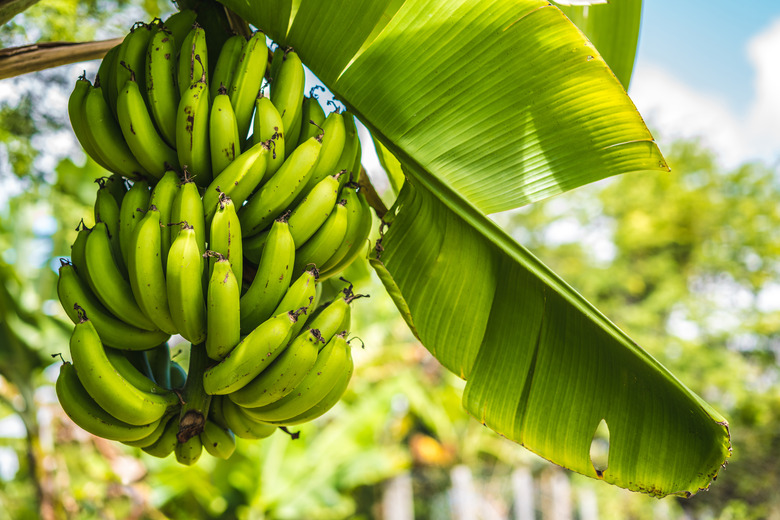How To Kill Banana Plants
We may receive a commission on purchases made from links.
When your fondness for that banana you planted years ago has begun to fade and this once-charming plant has invaded unwanted areas of the garden, you can go in two directions: get ready to employ lots of muscle power, or launch the nuclear option: poison. Assuming you don't want to compromise the health of your soil or create potentially dangerous conditions for pets, wildlife or your children, your primary option to get rid of a banana (Musa spp.) is to get out that machete, along with a shovel and a pick.
It's All About the Rhizomes
It's All About the Rhizomes
Bananas are notoriously difficult to get rid of because they grow quickly via underground rhizomes. These rhizomes produce "pups," or offshoots, that will become new banana plants. If you live in a USDA zone in which bananas not only grow but thrive as perennials, your banana has probably taken off like a rocket. Banana plant hardiness depends on the type of banana plant. For example, the edible banana (Musa acuminata) is hardy only in USDA zones 10 and 11, but the ornamental banana (Musa basjoo) is hardy in zones 6 through 10.
Underneath a banana stand is a colony of rhizomes. A banana plant won't propagate itself via pieces of its stem; only a rhizome. If you can dig out the entire clump, you might just avoid reappearance of the plant. Banana rhizomes produce roots that can reach as deep as 5 feet and grow up to 16 feet across.
The Manual Method
The Manual Method
Manual removal of a banana plant can be arduous if the banana stand is very large. In fact, if you do have a long-established banana plant with multiple offshoots, consider hiring a landscape company to dig out the root system with a backhoe.
To tackle a smaller banana plant yourself, first cut the plant down to about 1 to 2 feet. Dig a large trench around the plant as deep as possible, using both a pickax and a shovel, encircling the entire clump of rhizomes. Begin to dig out the stems and rhizomes. A machete or similar tool is useful for breaking the pseudostem into pieces as you remove it. There is no science to this — just work to get as much of the rhizome system as possible.
It's likely that new shoots will surface later, because even the smallest piece of rhizome can generate a new plant. Be persistent in digging out these unwanted volunteers.
The Chemical Method
The Chemical Method
If you're unable to rid your yard of a banana or can't handle the manual labor involved, consider going the chemical route. While many agricultural experts promote the use of kerosene, don't use this method in a home setting. For both commercial and residential banana growers, the University of Hawaii recommends injecting the banana stem with full-strength Roundup, offering specific instructions on how to gouge a hole into the stem and inject the chemical.
If you try this method, be sure to read all the product's instructions, choose a dry day with no wind, wear protective gear and follow proper safety precautions, especially because the advice is to use full-strength Roundup concentrate rather than a diluted solution. Avoid getting Roundup on nearby plants. It should take about six weeks for each stem to turn brown and die. During this time, keep all pets and people away from the treated stems. Even Roundup may not kill the entire plant, however, so watch for regrowth. If the banana does regrow after being treated, the best option is to dig it out.
